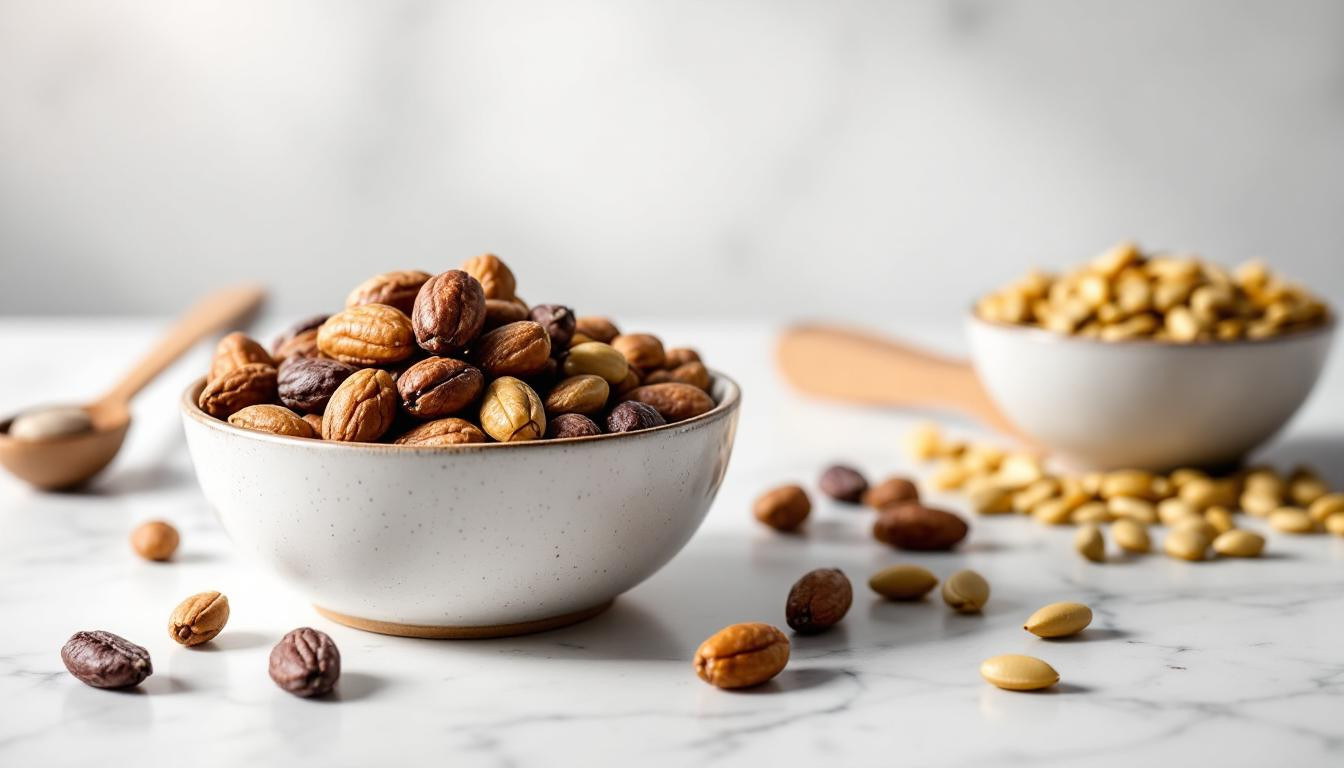Unsalted mixed nuts have long enjoyed a reputation as a health food, but this seemingly innocent snack deserves closer scrutiny. While nuts offer impressive nutritional benefits, consuming them inappropriately can lead to surprising health concerns that many consumers overlook.
The Hidden Calorie Trap in Your Healthy Snack
A single 1-ounce (28g) serving of unsalted mixed nuts delivers approximately 170-180 calories, primarily from fats. While these are predominantly heart-healthy unsaturated fats, the caloric density remains significant. Just one handful exceeds the calorie count of many processed snack foods, making portion control absolutely critical.
As nutritionist Dr. Maya Henderson explains:
“The biggest issue with mixed nuts isn’t their nutritional profile—it’s that most people severely underestimate how many they’re eating. A proper serving is about 23 almonds or 14 walnut halves, but studies show consumers typically eat 2-3 times this amount in one sitting.”
The Brazil Nut Selenium Concern
Most mixed nut blends contain Brazil nuts, which harbor a little-known risk. A single Brazil nut contains 68-91 micrograms of selenium, providing nearly 100% of the daily recommended intake. Consuming just 2-3 Brazil nuts daily can exceed safe selenium levels, potentially leading to selenosis—a condition causing hair loss, brittle nails, digestive issues, and in severe cases, nerve damage.
Research published in the Journal of Nutrition has documented cases where individuals consuming just 8-10 Brazil nuts weekly developed mild selenium toxicity symptoms. The effect is particularly concerning when mixed nuts are consumed alongside selenium-containing supplements.
The Blood Sugar Paradox
While often marketed as diabetes-friendly, certain nuts in mixed blends can cause unexpected blood sugar responses. Cashews, commonly found in mixed nut blends, contain significantly higher carbohydrates (approximately 8g per ounce) than other nuts.
In a clinical study tracking glycemic responses, regular cashew consumption produced measurable blood glucose increases in participants with pre-diabetes—an effect not seen with equal portions of almonds or walnuts.
Fat Composition: Not All Nuts Are Created Equal
The fat profile varies dramatically between nut varieties in mixed blends:
- Walnuts offer beneficial omega-3 fatty acids
- Macadamias and hazelnuts contain primarily monounsaturated fats
- Cashews provide more saturated fat than other varieties
When manufacturers create lower-cost blends, they often include higher percentages of less expensive nuts with less favorable fat profiles. This nutritional variance can impact cardiovascular outcomes, especially for those consuming mixed nuts daily for heart health.
The Oxalate and Kidney Stone Connection
Almonds, a staple in most mixed nut blends, contain high levels of oxalates—compounds that can contribute to kidney stone formation in susceptible individuals. For those with history of calcium oxalate stones, the regular consumption of almond-heavy mixed nut blends could increase risk of recurrence.
Nephrologist Dr. James Wilson cautions:
“I’ve treated patients who developed recurring kidney stones after adding daily mixed nuts to their diet. Many were shocked to learn their ‘healthy’ habit was contributing to their painful condition.”
Phytic Acid and Mineral Absorption
Nuts contain phytic acid, a natural compound that can bind to minerals like iron, zinc, and calcium, potentially reducing their absorption. When consumed in large quantities or with meals, the phytic acid in mixed nuts may interfere with the body’s ability to utilize essential minerals from other foods.
This is particularly problematic for vegetarians and vegans who rely on plant sources for minerals and regularly consume nuts as protein sources. The cumulative effect can contribute to subtle mineral deficiencies over time.
Healthier Approaches to Nut Consumption
Rather than avoiding mixed nuts entirely, consider these evidence-based approaches:
- Strictly measure portions using a food scale or tablespoon
- Select blends without Brazil nuts if consuming regularly
- Separate consumption of mineral-rich meals and nut snacks by 1-2 hours
- Opt for single-nut options with specific health benefits (walnuts for omega-3s)
Consider trying seed-based alternatives like pumpkin or sunflower seeds, which provide similar nutritional benefits with lower calorie density and oxalate content.
While unsalted mixed nuts can be part of a healthy diet, they’re best approached with informed moderation rather than unlimited consumption. By understanding their nutritional complexities, you can enjoy their benefits while minimizing potential risks to your long-term health.
